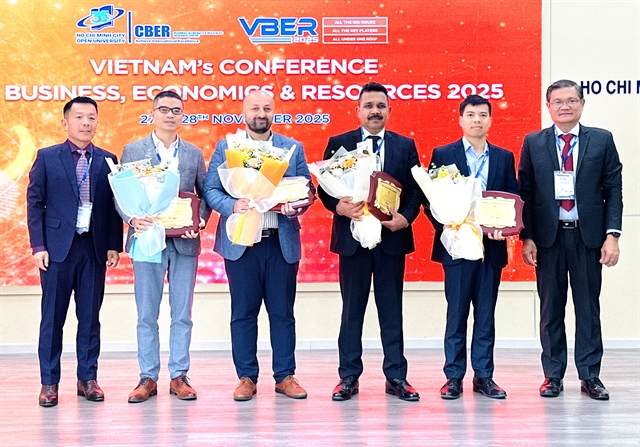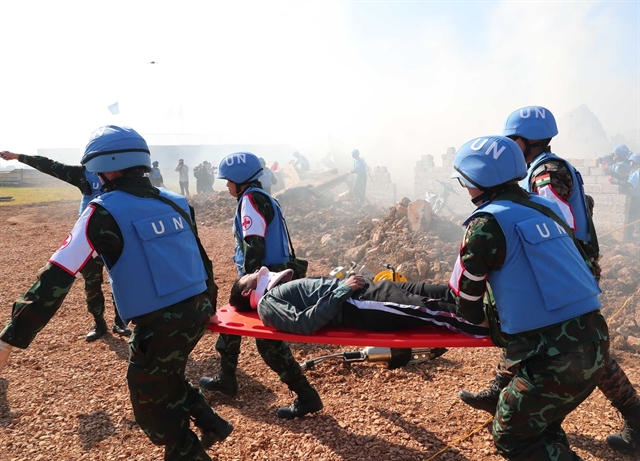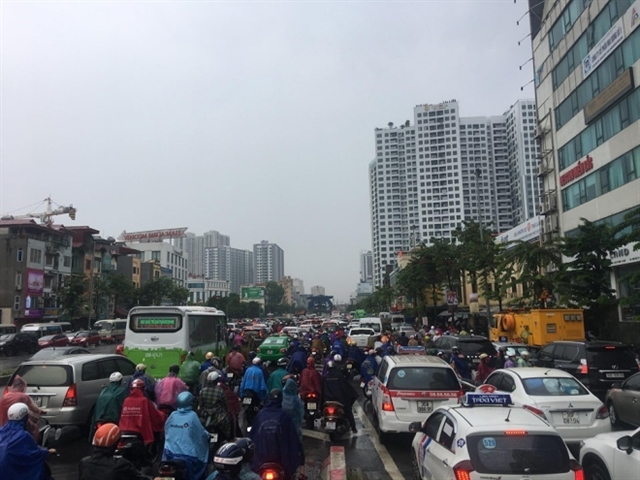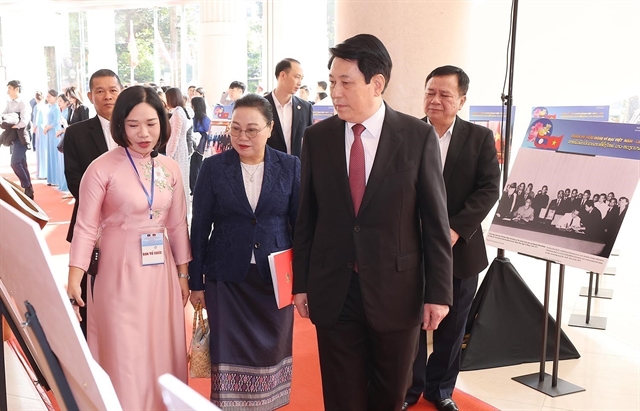 Society
Society

Eight more traffic hotspots have cropped up in Hà Nội despite the city’s efforts to improve infrastructure.

|
| Minh Khai Street, flanked by dozens of apartment buildings, suffers severe traffic congestion during rush hours. — VNA/VNS Photo |
HÀ NỘI — Eight more traffic hotspots have cropped up in Hà Nội despite the city’s efforts to improve infrastructure.
The situation is predicted to get worse as the year-end holiday season approaches.
The rapid rise of new apartment blocks in the heart of the capital is blamed for the congestion, especially during peak hours.
The appearance of Mường Thanh Group’s skyscrapers, for example, has turned Linh Đàm – which was planned to be a symbol of a modern and well-organised urban area back in the beginning of the new millenium – into a severe traffic hotspot, Vietnam News Agency.
With some 80,000 residents, the area is now shouldering a perpetual influx of traffic.
Residents have to endure congestion inside and out during peak hours, tolerating long queues to get into elevators before heading onto overcrowded streets on their way to work.
Thuỷ, living in Linh Đàm, said it is such a challenge to get a taxi from her apartment even when her ride-hailing app shows several drivers nearby. Even when she eventually succeeds in booking a car, the chance of the driver cancelling is high.
“One time when I booked a ride via Grab to Giáp Bát Bus Station on Giải Phóng Street at 9am, the drivers complained about how hard it was to get to the main road. It ended up taking more than half an hour to drive the 5.5km from Linh Đàm,” she told Vietnam News Agency.
“The driver needed to pick his way through small alleys to avoid being trapped in the massive queues of vehicles,” she added.
The city has recently opened a bridge over Tô Lịch River connecting Linh Đàm with Kim Giang Street, which was expected to ease traffic pressure in the densely-populated area. Conversely, the rising number of vehicles worsens the situation, blocking entrances from Linh Đàm to Giải Phóng and Kim Giang streets, even during weekends.
The rapid increase of high-rise buildings and apartments blocks in Hà Nội’s downtown area, along with a lack of infrastructure, leads to severe traffic congestions around the city.
Despite being expanded, the beltway No 3, between Thanh Trì Bridge and Cầu Giấy District’s Mai Dịch Commune is still clogged as too many apartment buildings are constructed along the road following the expansion.
Thăng Long Avenue and Võ Chí Công Street are predicted to face the same problem due to mass housing projects in these areas.
Some residents in Hà Đông District had to sell their apartments as they were trapped for hours on Nguyễn Trãi Street.
Hà Nội’s rate of land given for inner city traffic at present is under 9 per cent while the standard of other cities around the world ranges from 22 to 24 per cent.
The capital’s population density is rising which makes traffic congestion inevitable.
In 2019, 33 traffic hotspots were reported in Hà Nội, including eight new ones on Định Công Bypass, Chùa Láng Street and Phùng Chí Kiên Street, for example. The city’s traffic safety committee has undertaken several solutions to ease and eliminate traffic jams, such as installing warning signs, speed bumps and adjusting traffic lights.
Hà Nôi Department of Transport is deploying radars at intersections of Trung Kính-Mạc Thị Bưởi streets and Phạm Văn Bạch-Dương Đình Nghệ streets to collect data on traffic patterns which will later be used to develop infrastructure plans.
Colonel Nguyễn Văn Viện, deputy director of Hà Nội Police, said they have asked the city’s authorities to tighten management over licensing mass housing projects to make sure that the traffic infrastructure can withstand the pressure posed by apartments and their residents.
Hà Nội has also urged universities and hospitals to relocate to suburban districts to reduce congestion. However, as they are reluctant to make a move, the situation is not improving in front of these buildings. — VNS




